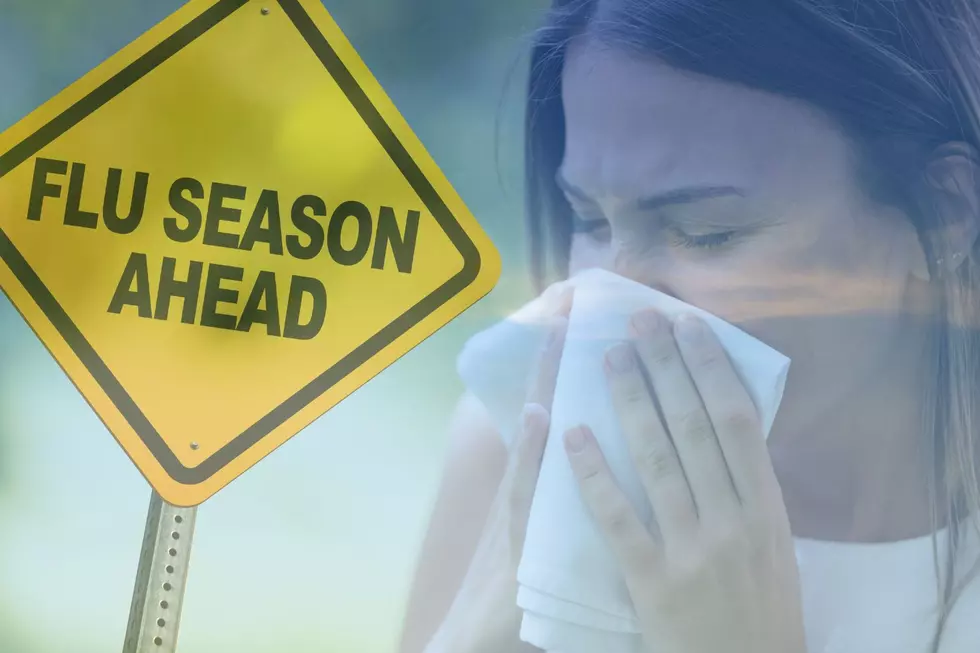
Enjoy The Summer, Avoid Ticks And Prevent Disease
Beautiful days are ahead and the Wyoming Department of Health wants to make sure Wyomingites enjoy their summer by avoiding tick and the diseases they can carry. The following is a release from the Department of Health in regards to some simple steps you can take to avoid ticks and prevent the spread of diseases.
Taking simple steps to avoid ticks when spending time outdoors is important to help prevent becoming ill with a tick-borne disease, according to the Wyoming Department of Health.
Diseases often transmitted by infected ticks in Wyoming include tularemia, Rocky Mountain spotted fever (RMSF) and Colorado tick fever (CTF) .
According to Emily Thorp, surveillance epidemiologist with the Infectious Disease Epidemiology Program, “While we may not see high case numbers with these diseases, they can be quite serious. We recommend anyone who becomes ill after an insect or tick bite, or after handling a sick or dead animal, should contact a medical professional.”
In 2010 three cases of tularemia, including one that was fatal, were reported to the Wyoming Department of Health. There was just one CTF case and no RMSF cases. The year before, three cases of RMSF, seven cases of CTF and two tularemia cases were reported.
Tularemia symptoms can include fever, swollen and painful lymph glands, inflamed eyes, sore throat, mouth sores, skin ulcers and diarrhea. If the bacteria are inhaled, symptoms can include abrupt onset of fever, chills, headache, muscle aches, joint pain, dry cough and progressive weakness and pneumonia. Initial RMSF symptoms may include fever, nausea, vomiting, muscle pain, lack of appetite and severe headache. Later signs and symptoms may include rash, abdominal pain, joint pain and diarrhea. RMSF patients often require hospitalization. Colorado tick fever usually causes fever, headache, muscle and joint pain, and, occasionally, a rash.
“Tick populations usually peak during the spring and summer months of May, June and July,” Thorp said. Humans are exposed to ticks by walking through, playing or sitting in brushy and grassy areas or by handling animals. Recommendations for people visiting potentially tick-infested areas include:
* Wear light-colored clothing to make it easier to see ticks crawling on clothing.
* Tuck pant legs into socks.
* Apply insect repellents such as those containing 20 percent or more DEET and/or picaradin to discourage tick attachment.
* Upon return from potentially tick-infested areas, search body for ticks and remove them.
* Parents should check their children for ticks, especially in the hair.
* Pets can carry ticks into the household and should also be examined. Veterinarians can recommend tick control products for pets.
Tularemia, also known as “rabbit fever” or “deer fly fever,” frequently affects rabbits, hares and rodents and has been associated with rabbit die-offs. Other mammals, including domestic animals, can also become infected. In addition to tick bites, people may acquire tularemia when bit by infected deer flies or horse flies. It can also be transmitted by handling infected animals, or through ingestion or contact with untreated, contaminated water or insufficiently cooked meat.
Added precautions to help reduce the risk of tularemia infection include:
* Avoid bathing, swimming or working in untreated water and avoid drinking untreated water.
* Avoid handling rabbits, squirrels or other animals that appear sick.
* Wear rubber gloves when skinning animals, especially rabbits and squirrels; skin animals in a well-ventilated area.
* Wash hands thoroughly with soap and water after handling sick or dead animals.
* Cook meat thoroughly before eating, especially rabbit and squirrel.
Tick-borne diseases are confirmed through physician-ordered blood tests. Healthcare providers should report any suspected or confirmed cases of tick-borne disease by calling 307-777-8634 begin_of_the_skype_highlighting 307-777-8634 end_of_the_skype_highlighting.
Audio was provided by Emily Thorp
More From KOWB 1290









